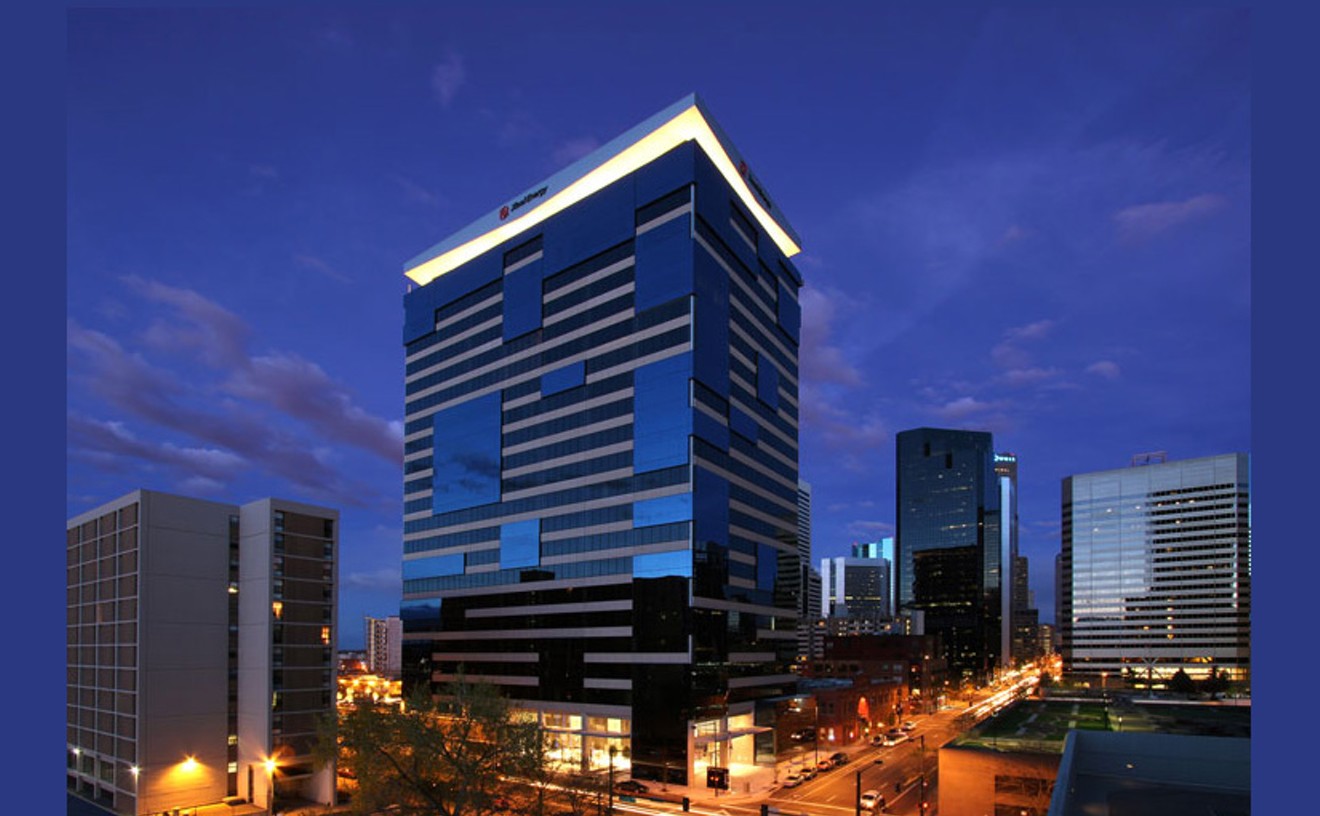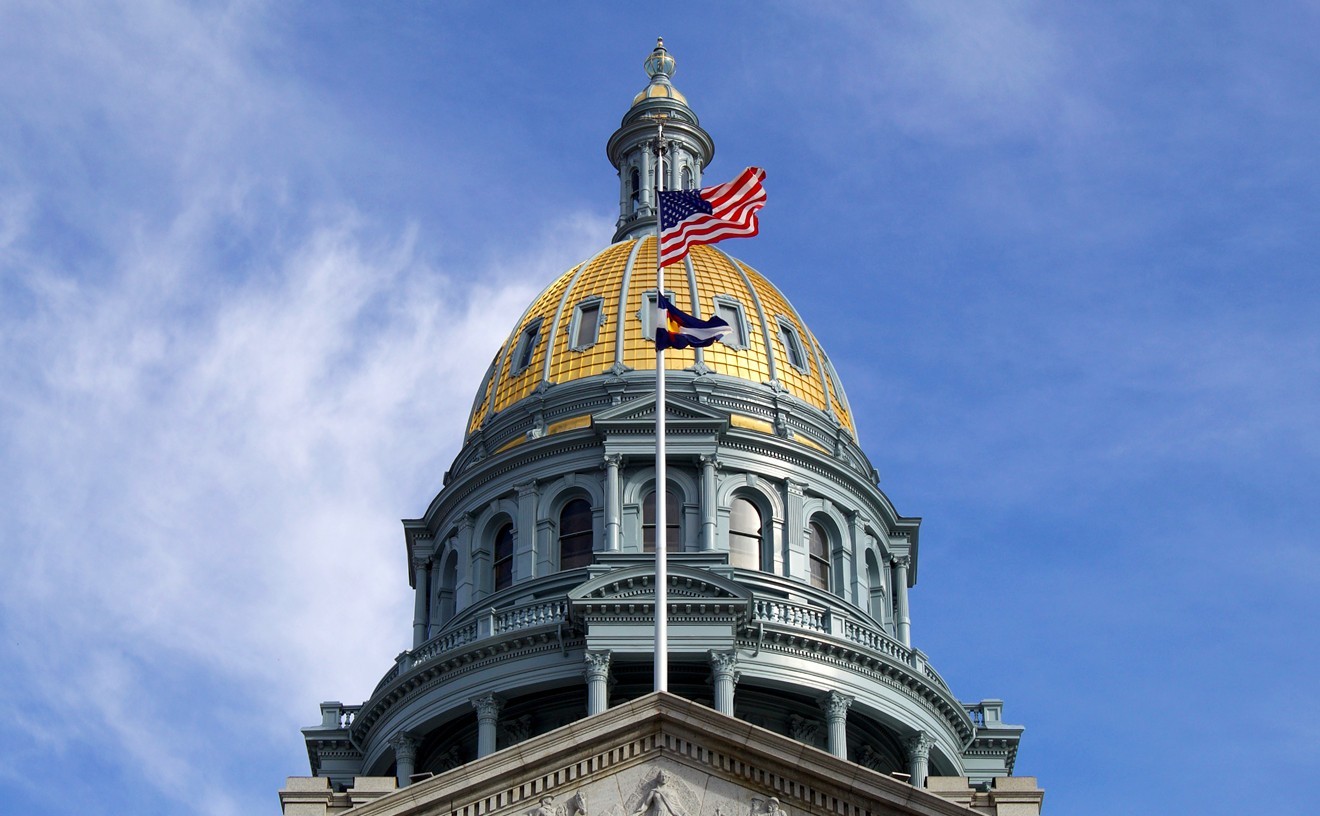Gentrification is simply the last vestige of Manifest Destiny. Plain and SIMPLE.But her conclusion is far from the final word on this issue. We just received this from another person who requested anonymity:
I have lived in the Cole neighborhood for six years. I moved into the neighborhood because, in part, I loved its diversity, being originally from New York and having grown up among a huge cultural melting pot. I think this dialogue is important, if not critical, to engage in as we continue to grow and thrive as a Denver community, but I think it is impossible to discuss and understand without putting a few things into perspective.The following letter appears in the current edition of Westword:
First and perhaps most important, I think it's imperative to note that in this case, most of the historical neighborhoods being discussed have changed hands more than once in their century-plus of existence. Curtis Park, Whittier, Five Points, Highlands; name the neighborhood, most of them were built before the turn of the century and those "communities" long ago disbanded and passed the neighborhood to the next. This has happened before, and will happen again, a natural part of the changing dynamics of urban living combined with the thousands of other factors that are pushing people back into urban centers: fuel prices, commute times, convenience, and yes, the availability of businesses like coffee shops, restaurants, bakeries, grocery options, all of the new additions to the neighborhood. Walkability isn't just a trend, it's the future, and many of us don't have cars anymore and rely on public transit in the community as much as density of small, local business. Neighborhoods evolve in today's America because, in part, people don't stay put as they did in the past.
Secondly, I think there is some confusion, or lack of understanding, that persists in my mind and those of some of my neighbors (who I have taken the time to get to know, talk with, and bond with). My neighbor a few houses down has lived on the block for nearly sixty years. She lives next to the space where her original home was, which "fell apart," as her story goes. She is pushing ninety and takes impeccable care of her home. She knows the ghosts of each and every home on the block. She is a gem. But even she will attest to others in the community who have lived there nearly as long as she has, who don't care for their homes, don't pick up the trash in the yard, and do not demonstrate much respect or care for the community at all. (Yes, there are many variables to this...there are families who are working multiple jobs just to make ends meet and struggle to repair and maintain an aging, historic home.) I've even seen the same person walk down our street regularly, dropping trash and waste along the sidewalk on the way back home.
So here we have a disconnect; and I take issue with the idea posed in the reader response. ..."but it’s unilateral business decisions like this that fail to take into account the rich history of the neighborhood and ultimately abandon people who have lived their for years and built up the community." The Downing Sooper is a business that occupies the largest space in a main shopping center off Downing and has been there since before this gentrification began. I have seen no evidence of their stewardship in the community. No representation at neighborhood meetings. No cleanup of trash in their lot, on the sidewalks adjacent. No proactive approach to reducing crime outside of their four walls. Meanwhile, Denver Urban Gardens, as just one example, has occupied part of the newly-renovated and previously abandoned space on 33rd Street near Downing. Their primary focus is building community, and their programming is accessible to anyone. They even encourage home gardeners to share free and excess produce with their neighbors who might not have the ability to purchase enough fresh food and vegetables. See their events calendar: http://dug.org/events/. The developers at the Zeppelin Development, responsible for projects like Taxi and The Source, are actively involved in community meetings, proposals, and lobbying for resources to improve sidewalks, parks, and other community spaces. This is how to be a steward in your community.
The last factor to consider is the one that, I think, no one wants to talk about: Denver's quite frankly shameful history of racial injustice and income inequality. This is a common theme of gentrification, and is an issue we continue to grapple with as a nation. These are real issues, bigger than one neighborhood, bigger than one development, and certainly bigger than how we redevelop our communities. Until these conversations can happen, until we can truly come together as a large community and heal, if we can heal, I don't think we can discuss gentrification in a meaningful or truly objective way. After all, isn't that what we really mean when we say gentrification? We use loaded terms like "destroying communities" and "abandoning the elderly and low income" or "improving the neighborhood" and "removing derelict homeowners," which polarize us. There are too many undercurrents, too many emotions, too many painful stories woven deeply into the fabric of these communities that, perhaps more than anything else, helped in large part to bring them together. These are also the things that continue to threaten to separate us, to tear us apart.
An absent parent or parents, children not steeped in electronics, jobs for youth and adults that pay less than $15 an hour, parents unwilling to work two or three jobs to make a better life for themselves and their family...in an environment of raw prejudice (they say “Move!”) and ghettoing: These make for a melting pot of nothin’ for the marginalized.Here's another letter published in Westword this week:
Look at this handsome “kid,” Elijah Huff, who could become our president someday — or not. Where is the opportunity? Hear ye, hear ye, hear ye! Every person is an individual, not a color.
I found this article by Lauri Lynnxe Murphy riveting. It’s a story that deserves national attention — the narrative, the concept — and wide readership. Maybe printed in Reader’s Digest? I missed seeing a definition of gentrification, but I sure did sense what Elijah Huff feels like to be a stranger in a strange land...or is it “invisible,” in a land that promised “indivisible, with liberty and justice for all”?
Gene Edwards
Colorado Springs
A simple search on the Denver Public Library website of the word “Whittier” locates “Denver Neighborhood History Project, 1993-94, Whittier Neighborhood.” The report was commissioned by then-mayor and current resident of Whittier Wellington Webb. Since the author of “The New ’Hood” is research-challenged and only capable of writing contrived emotional anecdotes, I think it’s important to point out several findings from the 1994 report. By 1990, a quarter (25 percent) of all Whittier home lots were vacant or unoccupied. The population of Whittier had declined by 50 percent from 1950 to 1990 (in both black and white residents). Systematic “physical deterioration of homes became a serious problem, as many dwellings stood vacant due to residential ‘out-migration.’” Whittier went through multiple housing rehabilitation programs for four decades, dramatically altering its landscape and diminishing “the historic integrity of the neighborhood’s built environment by adding elements which did not relate to its historic development.” Historically, the report makes it clear, Whittier has constantly been a dynamic, ever-changing, racially charged tinderbox of a neighborhood. Ground zero in the anti-segregationist movement, targeted by KKK dynamite and, eventually, nearly plowed over by multiple local and federal housing “rehabilitation programs.” By 1994, Whittier was an abandoned, scarred and heavily altered historic neighborhood looking for revitalization and historic-preservation standing to eliminate the cycle of cheap development at the cost of historic landmarks. The 66-page report is a detailed, loving, historical account of the Whittier neighborhood, and proof that Whittier’s revival was not accidental or haphazard; it was planned, engineered by a mix of both black and white politicians, developers and homeowners.And at third letter published this week was addressed to the anonymous author of the letter posted here last week:
Please do not diminish this accomplish-ment by insinuating that a recent “white” wave of residents is responsible for the revitalization of Whittier. An interview with former mayor Webb would have been an appropriate counter to a poorly constructed, one-sided, race-baiting cliché. Black mayors (Webb and Michael Hancock) and black politicians (Albus Brooks) have been working for decades to improve the vitality of Whittier: Ask them if they feel the neighborhood has sold its soul. Ask them if they would like to return to the “’hood” days.
I also live in Whittier, on the 2400 block of Gaylord. As fifteen-year residents, my family has seen lots of change, good and bad, but the good has vastly outweighed the bad. I moved into Whittier just six years after the 1994 Whittier Neighborhood History report was compiled, and saw the neighborhood blight and abandoned lots. We also participated in block parties and backyard barbecues, saw helping hands in blizzards and shared lawn mowers in the summer. My family is white and in no way resembles the thinly drawn, racist caricatures portrayed in this article — not that the author would have looked for balance in this one-dimensional, rage-against-the-gentrification story line. For Whittier newbies, the past two years must seem like a blur of redevelopment; for my family, this change took an eternity. We’ve seen houses slowly rot into weeds and lived next to an abandoned elementary school for four years until a private school finally moved in and renovated it into an excellent neighborhood school. Where this author portrays Whittier as the victim of a gentrification monster, uncontrollably devouring the soul of a neighborhood, my neighbors see and live in a diverse neighborhood that fought through decades of misplaced housing rehabilitation, gangs, abandonment and revitalization failures, to finally reverse “out-migration” and become a vibrant neighborhood.
Patrick O’Brien
Denver
You mention that you have never sent in a comment to Westword, although you have been a longtime reader. It interested me that you have never thought to put pen to paper regarding Westword articles that have screamed of black and Hispanic injustice. Thank you for doing your part in trying to improve the neighborhood, but now maybe you are seeing and feeling what blacks and Hispanics have experienced for a hundred or more years. Not all blacks are on welfare and drugs, and not all Mexicans are thieves and rapists (I am going to try to keep that as my only Trump reference), yet we are painted by the same broad, ugly stroke over and over.Read more comments here — and feel free to post your own in the comments section.
What inspired you to finally write to Westword is [that] it is happening to you. I would advise you to not give up — as we haven’t. Look for what’s good in the ’hood and try to understand your neighbors, not work just to make the ’hood suburbia.
Dave Moya
Lakewood











